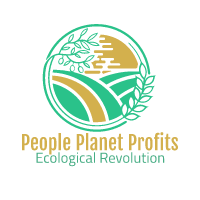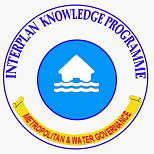Multi-level Water Governance
The programme is too relevant regarding challenges to handle and behind it relies
complexity ; so, there is a need to build a panel (Framework) which design means and
methods that better enable engagement of capacities across sectors and co-creation of
shared outcomes ; here we mean, how we can engage with others in their processes and
their capacities to co-create outcomes.
In short, there is a (4 all stakeholders) need to set conditions that build relationship-based community to drive
citizens to developing an Intent-based philosophy behavior as an interface to bridge the
gap between science and policy through addressing water awareness, informal
insurance to handle complexity and creating a vision of new norms in which we can
thrive and grow.

IKP Foundation vision
The organization was created to contribute to the increase of human development index
and to the building of an image of an innovative Burundi from a sustainable and resilient
development.
Buying from our iShop "Interplan MarketPlace" translates into contributing to the increase of financial assistance for sustainable development and local resilience ongoing project!!!

Premier Objective
Objective 1 : Address paradigm shift as an approach to implement efficient and
effective water governance and thereby allow for awareness of fostering adaptation.

Second Objectif
Objective 2 : address water awareness and efficient land use and thereby allow for
human development and reduce the negative impacts on the environment.

Troisième Objectif
Objective 3 : address good governance by introducing metropolitan governance
strategy into urban planning and thereby allow for better awareness of interactions
between economic efficiency, social equity and sustainable development.
Actions: feasible to change reality and reach the desired objective One
- 1. Since local administrative entities are held by local citizens; here we mean water and land users, our first action is to help them understand that their participation in sustainable development activities will allow them to cope, empower and take charge of themselves.
- 2. Since we become what we think, graduated human resources; civil engineers, hydraulics, technicians… need to focus more on the thinking behind our variety of ecosystems to inspire their relatives to think in solution mode… so, our second action is to make them understand that we must cut short the bureaucratic ideology; go back to their native hills to carry out community development projects, especially in terms of planning and management of the water network available to us.
- 3. Since every measure is a protective measure and financial arrangement for water
governance rely on implementation of good science policy interface ; so, our
third action is to prove decision makers that it is necessary to invest where
there are the poorest than the others, in particular in the rural areas and the
agricultural sector.
Actions: Feasible to change reality and reach the desired objective Two
- 1. Considering the relevance of social equity as pillar of sustainability and grouth over time as an important factor science/policy interface, our first action is to sustain a long-term science/policy interface which allows the strengthening of informal relationships, the development of formal links and methods and the availability of policy officials with a scientific background.
- 2. Regarding the environmental protection objectives, our second action is to acknowledge the technological innovation, social and economic changes that are posing new challenges for environmental policy and their links to science ; this should enable our organisation to raise questions about what responses policy should take in terms of addressing potential benefits and risks.
- 3. Taking into account the relevance of economic viability, regarding Burundi
economic context and the assessment of key stakeholders, we need to do more
with less ; so, our third action is to address the science policy interface
committed to improvement of economic systems and change of individual
behaviour in addition to setting a framework for new regulatory requirements.
Actions: Feasible to change reality and reach the desired objectives Three
- 1. Establish an integrated approach; it is a multisectoral and multi-level approach aimed at decompartmentalizing policies and administrations based on the simultaneous and equitable consideration of the imperatives and interests essential to the development of cities. This approach takes into account the physical, economic and social dimensions of urban development.
- 2. The strategic priority areas for balanced development being employment, innovation, education, social inclusion and energy efficiency, We must adopt a growth strategy; a strategy for the future aimed at a smart, sustainable and inclusive economy. These three priorities are mutually reinforcing in order to ensure high levels of employment, productivity and social cohesion.
- 3. Since cities pose a significant field through which to address Climate Change (CC)
as urban areas represent sites of high consumption of energy and production of
waste ; we need to design new methods and norms (a framework) that better
enable the study of Urban water bodies in view of potential for Micro-climatic
cooling and natural purification of waste water.
Make a Donation
Small or large, your contribution is essential.
